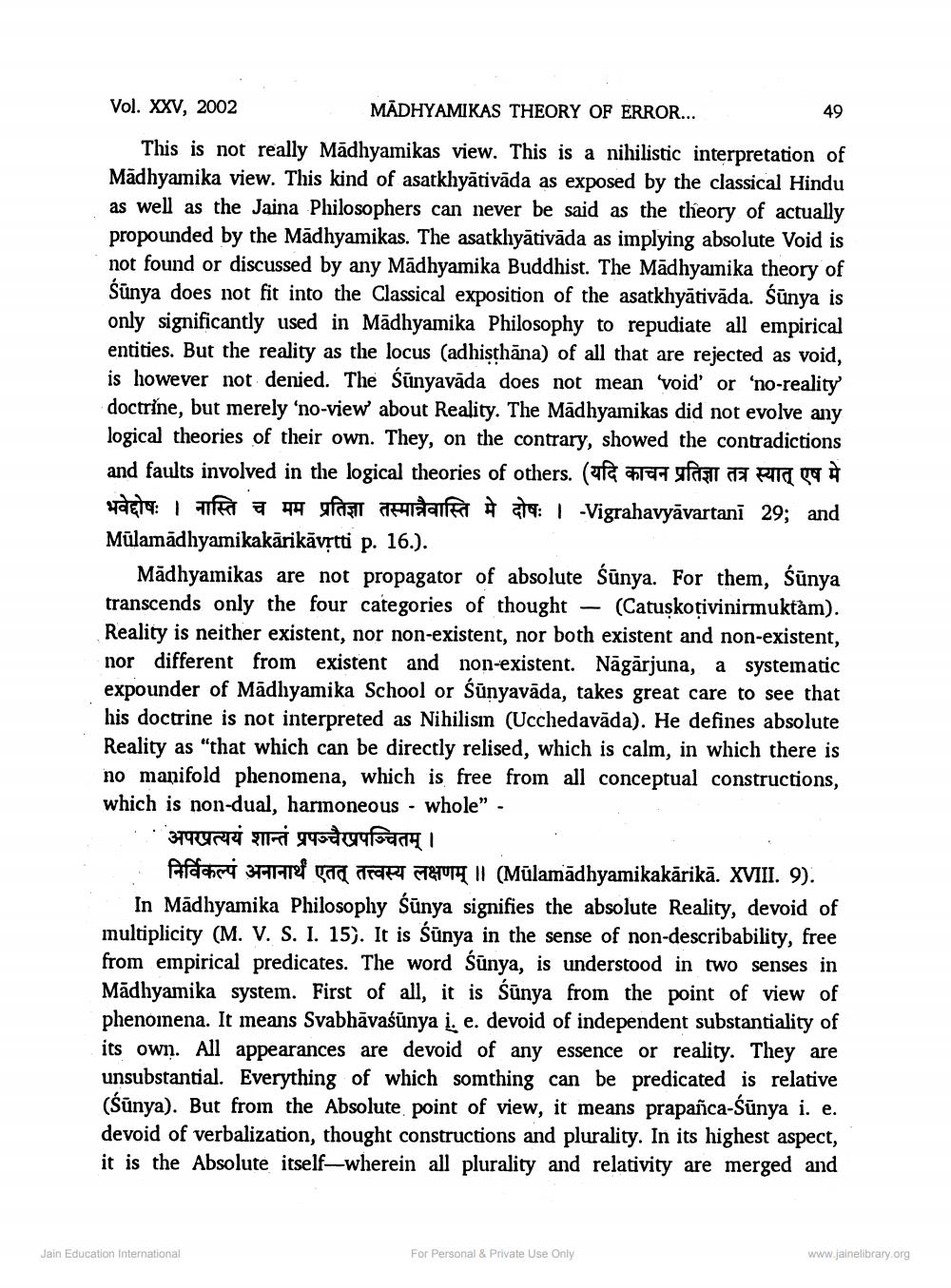________________
Vol. XXV, 2002
MADHYAMIKAS THEORY OF ERROR...
49
This is not really Madhyamikas view. This is a nihilistic interpretation of Madhyamika view. This kind of asatkhyātivāda as exposed by the classical Hindu as well as the Jaina Philosophers can never be said as the theory of actually propounded by the Madhyamikas. The asatkhyātivāda as implying absolute Void is not found or discussed by any Mādhyamika Buddhist. The Mädhyamika theory of Śünya does not fit into the Classical exposition of the asatkhyātivāda. Śünya is only significantly used in Mādhyamika Philosophy to repudiate all empirical entities. But the reality as the locus (adhisthāna) of all that are rejected as void, is however not denied. The Sūnyavāda does not mean "void' or 'no-reality doctrine, but merely 'no-view about Reality. The Madhyamikas did not evolve any logical theories of their own. They, on the contrary, showed the contradictions and faults involved in the logical theories of others. (यदि काचन प्रतिज्ञा तत्र स्यात् एष मे waela la au ufasi THT # 2 | Vigrahavyävartanī 29; and Mūlamādhyamikakārikāvịtti p. 16.).
Madhyamikas are not propagator of absolute Śūnya. For them, śūnya transcends only the four categories of thought – (Catuskotivinirmuktàm). Reality is neither existent, nor non-existent, nor both existent and non-existent, nor different from existent and non-existent. Nāgārjuna, a systematic expounder of Madhyamika School or Sünyavāda, takes great care to see that his doctrine is not interpreted as Nihilism (Ucchedavāda). He defines absolute Reality as "that which can be directly relised, which is calm, in which there is no manifold phenomena, which is free from all conceptual constructions, which is non-dual, harmoneous - whole".
अपप्रत्ययं शान्तं प्रपञ्चैनपञ्चितम् ।
Afache 344147ef gara Traffet Hur || (Mūlamādhyamikakārikā. XVIII. 9). In Madhyamika Philosophy śünya signifies the absolute Reality, devoid of multiplicity (M. V. S. I. 15). It is Sūnya in the sense of non-describability, free from empirical predicates. The word Śūnya, is understood in two senses in Madhyamika system. First of all, it is Sūnya from the point of view of phenomena. It means Svabhāvaśünya i e. devoid of independent substantiality of its own. All appearances are devoid of any essence or reality. They are unsubstantial. Everything of which somthing can be predicated is relative (Śünya). But from the Absolute point of view, it means prapanca-Sūnya i. e. devoid of verbalization, thought constructions and plurality. In its highest aspect, it is the Absolute itself-wherein all plurality and relativity are merged and
Jain Education International
For Personal & Private Use Only
www.jainelibrary.org




